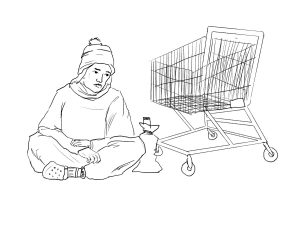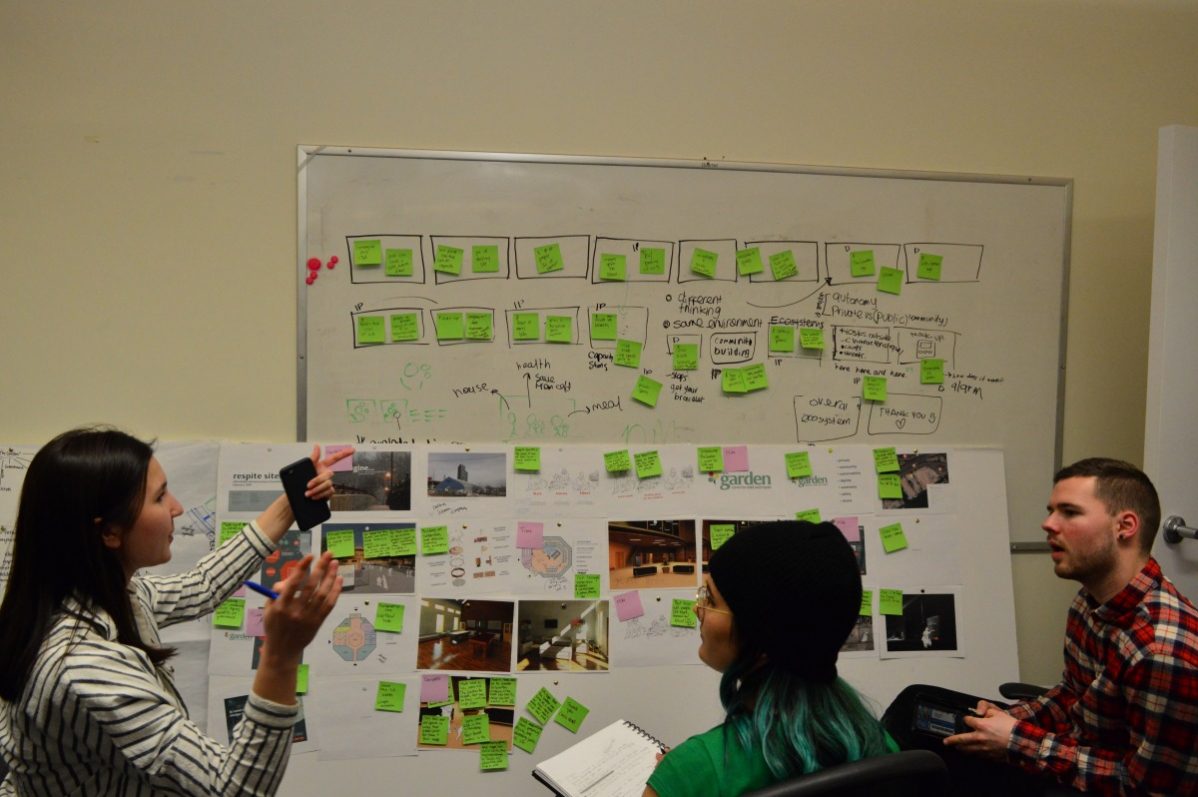GBC hosts international design sprint aimed at creating solutions for homelessness
The school of design at George Brown College (GBC) hosted a charrette in February that brought together designers from various industries and countries to research and formulate solutions to affordable living.
Teams of 10 explored various aspects of this theme, analyzing problems and realities and established missions focusing on community youth programs, housing, employment and homelessness.
Visions for a sustainable community-based framework was a key asset pronounced well among them.
I was lucky enough to participate in this event as a contributing architecture student.
Our group’s vision was to conceptualize how to aid homeless people in an innovative way that strayed away from the overwhelming factor of creating more shelters.
There has been a rapid decrease in the use of emergency shelter by Canadians, with a near 20,000 person drop from 2005 to 2014 according to the Canadian Observatory on Homelessness (COH).
Common reasons why people don’t seek shelters and prefer to endure the freezing weather is they don’t feel welcome, and above all, because they are overcrowded.
Many shelters require people to sign in on a day-to-day basis. This causes problems for those who are trying to keep steady jobs to get off the streets because the people who don’t work will fill the occupancy before the employed homeless people can get there.
Some shelters are not pet friendly and can also be a dangerous place for the LGBTQ2 community due to harassment and assault.
“Take a second to imagine, it’s -30C outside, you’re freezing cold, it’s dark and you’re hungry. What can you do?” asked Christelle Walker, illustration designer from OTIS College of Art and Design.
We were asked to define what ‘sustainable’ means to us and how this simple question can further the goal of finding concrete solutions.
“Our culture is very obsessed with owning a house and owning things, meanwhile there’s a rise of sharing economies,” said Casey Hinton, an interdisciplinary design strategy student.
“Some of them are thinking about how that kind of philosophy can be expanded to space or housing to help tackle some of these affordable issues.”
There was a disconnect found between homeless people and the working class.
Our society portrays this demographic as being a lost cause. But what does it mean to have a home?

Illustration by Christelle Walker
We challenged this stigma by taking the perspective of homeless people and finding ways to create a welcoming community that doesn’t simply help them; it facilitates a space where this community can aid each other.
Tackling such an important topic in such a diverse group with differing skills was an unreal bonding experience that exercised our brains to the maximum.
“The whole atmosphere is very insightful because you take knowledge from other perspectives, not only focusing on your specialization, but also produce their thoughts into material and help you develop your concept,” said Renata Shamsutdinova, an architecture technology co-op student.
It was amazing what 10 designers from different fields could come up with in a room together for a weekend, working 9 a.m. to midnight with intense collaboration among architects, product/graphic designers, artists and of course our amazing facilitators and advisers that steered us in the right direction.
We worked with students and industry professionals from France, Denmark, Italy, and the United States and were submersed in a whirlwind of insights and constructive criticism that helped us develop a concept that truly addressed the most important problems for improving quality of life for homeless people.
Our design included a way for people to interact with the site without feeling overwhelmed and strayed away from the systematic feel of many shelters.
Our concept was meant to give people a space to ease into a community at their own pace.
By having outdoor areas in front of the building, we envisioned a space to facilitate social opportunities as well as private spaces to welcome all types of needs.
It was revolutionary to be a part of and by taking this initiative, the Institute without Boundaries is teaching critical thinking skills in a whole new way.



